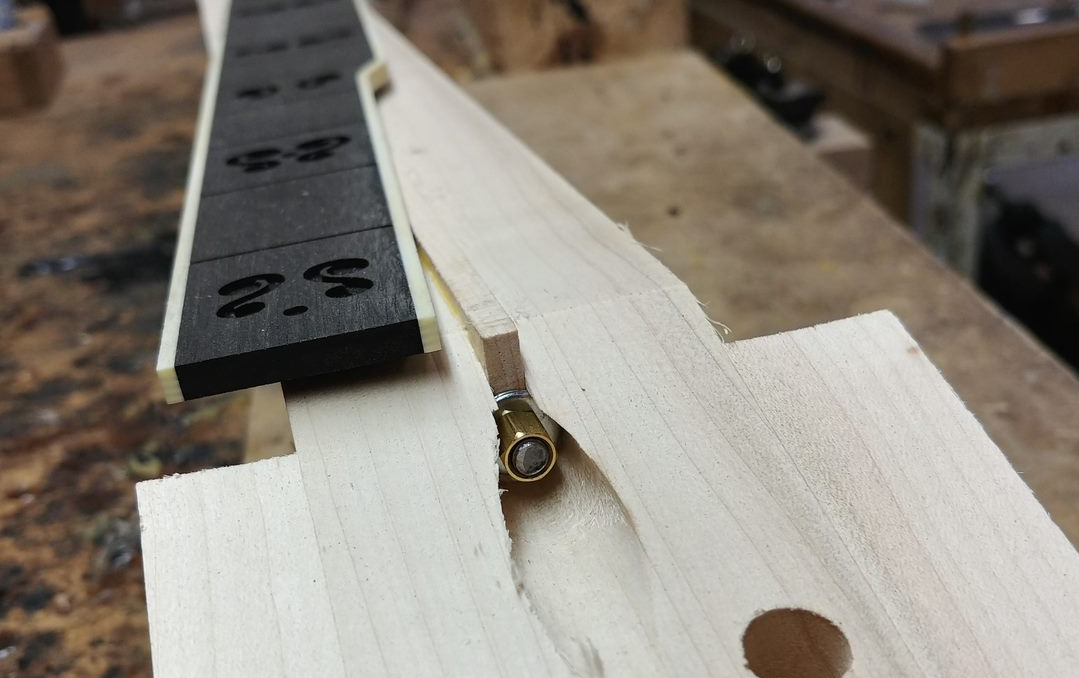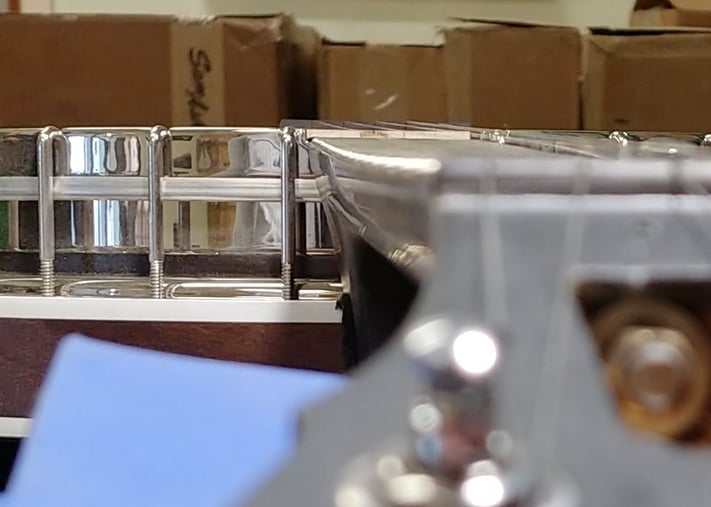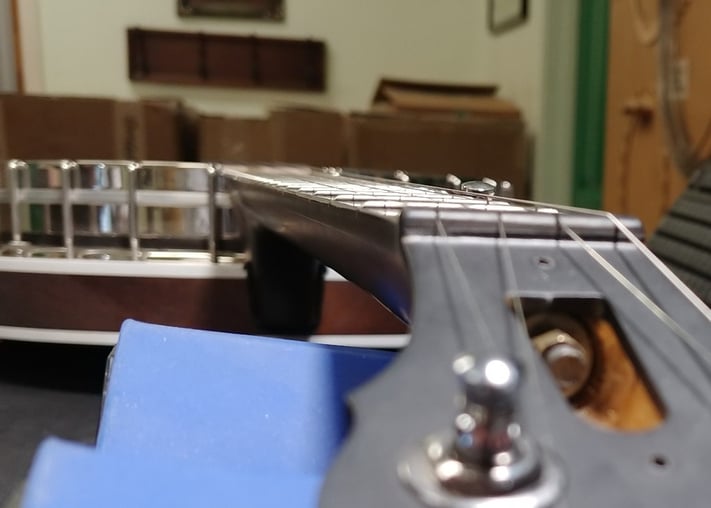At Deering, we fully encourage and welcome our customers to call us with any questions they may have. Here’s one that has been an interesting topic of conversation. Even seasoned players have been amazed at how the Goodtime banjos have performed well over the past 20 years without a truss rod. How do we do that? Is it magic?
Well, for all you newcomers, first off….A truss rod is not unique to banjos. They are commonly found in most stringed instruments, including guitars, basses and mandolins to counteract the tension generated by the strings. The truss rod is simply a rod that runs, out of sight, length ways through the center of the neck and under the fingerboard, most often with a convenient adjustment point at the peghead end of the neck, underneath the "truss rod cap".

To illustrate what a truss rod does, when you glue on a fingerboard to a neck you have two pieces of wood that will expand and contract at different ratios depending on the density of the woods. It’s a response to the environment of the banjo. The different woods absorb humidity from the air and expand or dry out and contract at different rates causing stress that the truss rod compensates for. So, as weather conditions affect the instrument, the more complex neck will need adjustments. That is what a truss rod is for.
Because by design stresses on the neck are eliminated, or almost nonexistent. Greg Deering overcame the need for a truss rod first off by making the Goodtime banjo necks strictly out of hard rock maple. When you use only one dense hardwood the stresses in the neck are eliminated and so there is no need for a truss rod. This works well for banjos because they use lighter gauge strings than guitars.
Greg’s ingenuity came up with the correct design, choosing the right hard rock maple with the correct grain pattern, then machining the neck with precisely the right curvature for great playing and you have no worries about adjustments to the neck. It’s not just Greg’s idea since it has also been confirmed over 20 years by all the customers in the field who have purchased a Goodtime banjo without having issue with a neck bowing.
A truss rod is needed when a neck has either much heavier strings like a guitar or a bass, and/or two different woods with different density – like an ebony or rosewood fingerboard glued to a maple, or mahogany neck, or such. The two different woods will absorb moisture from the air or dry out in arid climates at different rates and so the neck may get an increased curvature or a back bow as a result.
Our Solana 6-string banjo with nylon strings features the original no rod design that works great on a nylon strung 6-string banjo. But, on the new Goodtime 6-strings with steel guitar string gauges we do install a truss rod to counter balance of the greater pull of the heavier guitar strings. And of course, we install truss rods in all the upper line Deering and Vega necks which feature ebony or midnight maple fingerboards with either mahogany, maple, white oak or walnut necks.
When a neck bows the result is the height of the strings from the fingerboard (commonly referred to as the "action") has become significantly higher, meaning the player now must press harder to fret the strings.
So, to be able to control and, if necessary adjust that bow. Enter the truss rod.

When tightened, the truss rod will adjust the neck so that it counteracts that tension and removes some of its curve. Now, there is a balance here. If you tighten too much and the neck becomes flat, you will start to hear a lot of rattling and buzzing as the strings become too close to the frets. Any good tech will try and adjust the truss rod so that the action is comfortable for the player, while simultaneously ensuring that there is no buzzing of the strings.

Sam, our resident banjo repair tech, makes truss rod adjustments to our customer's banjos as needed.
The magic of this simplified design allows us to make Goodtime banjos in the USA at an affordable price. One important part about the Goodtime banjos is that the neck is crafted from a different kind of maple than the violin grade maple used on our rims. Instead, we use a very hard, very dense rock maple for our Goodtime necks. And believe me when I say, these are very stable. In the office here, we still have a few of the original run of Goodtime banjos, (pictured below) the necks of which are still playing beautifully after more than 20 years. To date we have produced more than 100,000 Goodtime banjos without truss rods and we have only had to replace a few dozen necks. They are a dream product of American ingenuity and reliability.
.jpg?width=711&height=446&name=Truss%20Rod%20(1).jpg)
So, is an instrument with a truss rod superior to one without? It can be, but not necessarily…. it depends on the instrument….
Having started my musical instrument career in service and repair, I have had the misfortune of seeing (and in one case, owning) many imported stringed instruments over the years that have boasted a truss rod. Which is wonderful, until you come to make the adjustment and you discover that the rod is already maxed out and cannot be adjusted any further.
There are three other ways to adjust a Goodtime Banjo’s action.And while the Goodtime neck is specially designed to incorporate the ideal angle-to-string height ratio, if you ever find that you need to adjust your action, your banjo has a little trick that is not found on guitars or basses.
So, there you have it. The truss rod is a nice feature. But only when it is truly needed. Be wary of truss rods in “budget” instruments which may have problems a truss rod won’t fix. And, for the player with the magical Goodtime banjo design you have a reliable banjo neck. And more time to focus on playing!
3733 Kenora Dr.
Spring Valley, CA 91977
COMMENTS